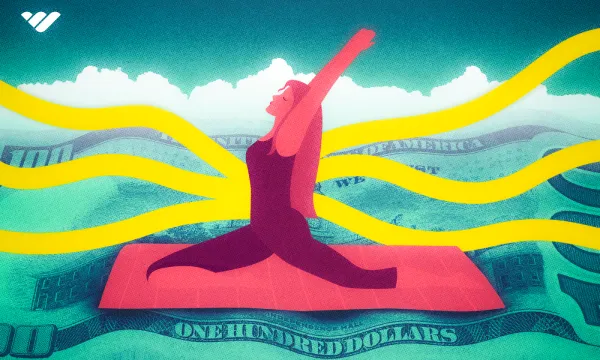Did you know that the global online fitness market is booming, and it's all set for significant growth in the next few years? Valued at $14.9 billion in 2022, it's now projected to reach $250 billion by 2032.
Not only that, but you can easily cut a piece of that cake for yourself by sharing your passion for fitness with the world as an influencer.
Some might say that you could just start working as a personal trainer, but whether you do or you don't, there's a lot of money to be made on becoming a fitness influencer — and it's for a good cause, too. You'll help people better themselves, share your ideas, and teach others how to achieve their goals, all while being paid for your time, energy, and knowledge.
There are plenty of ways to make money as a fitness influencer, ranging from running a paid fitness community on Whop to selling one-on-one coaching sessions and ebooks. We'll walk you through these opportunities below and help you pick the ones that suit you best!
9 Ways to Make Money as a Fitness Influencer
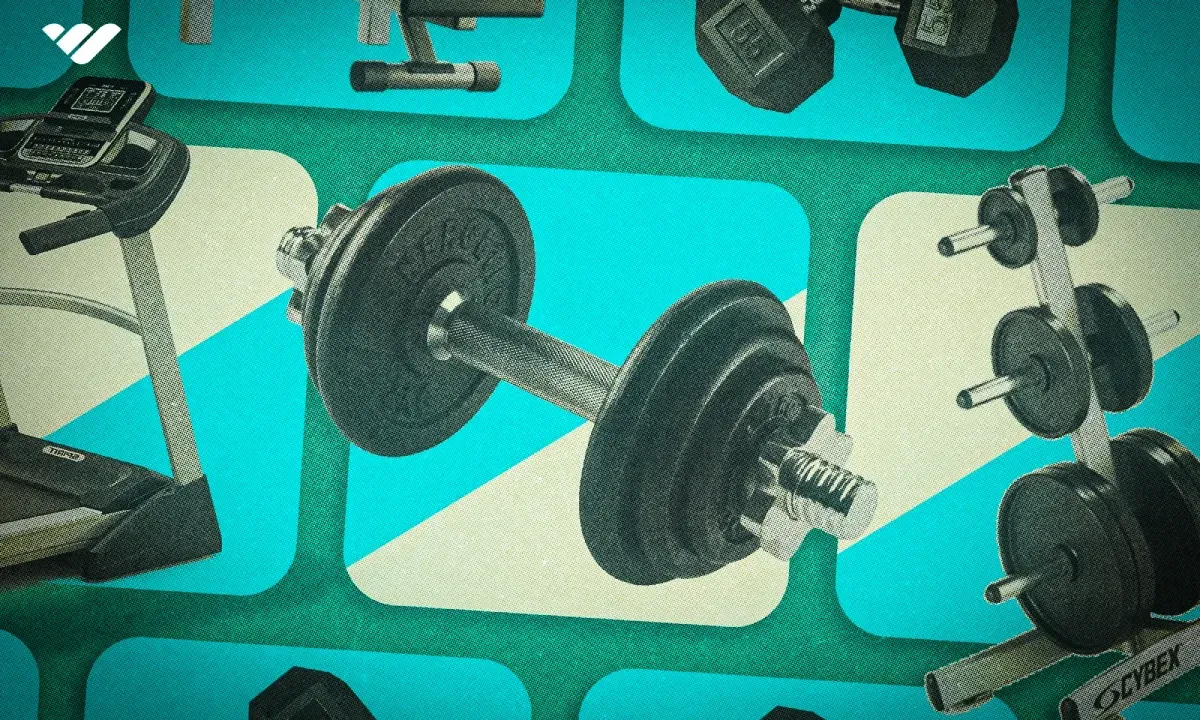
You're a fitness pro, building your following and creating a brand for yourself. Your followers want to learn from you and they look to you for daily inspiration.
But how to turn that inspiring content into a great source of income? The best approach is to try a few different ways that work for you, as a versatile content creator never runs out of streams of revenue. Here are the best ways to make money as a fitness influencer.
1. Sponsorships and Partnerships
The global fitness market extends far beyond content creation, and outside of the drive and creativity of influencers, it's largely powered by fitness and wellness brands. Partnering up with the brands you believe in and use in your own fitness journey can be highly lucrative.
Once you build a following, brands may start to reach out to you themselves—this applies even to micro- and nano-influencers with smaller followings. However, if you're not getting the partnerships you want, you can make them happen yourself.
Here are some steps to follow in this situation:
- Identify potential sponsors
Consider brands that align with your fitness philosophy, but also with your audience's interests. This can be anything from gym clothing to protein shakes—you know best what your audience might want to see. - Build a portfolio
This is a showcase of your best work, including fitness-related endeavors and your social media handles. However, it's also important to bring in some hard data. This means metrics like follower demographics, engagement rates, and successful past partnerships. Showing off your reach will give the brand an idea of the kind of benefits it will reap from working with you. - Create a pitch
Just as being an influencer is intrinsically tied to marketing foundations, reaching out and obtaining sponsorships is, too. Develop a tailored pitch for every sponsor, highlighting how your work aligns with their values and what you can bring to the table. Be specific here; for example, talk about how your past partnerships affected brand awareness, increased follower counts, or brought in more sales for the company. - Reach out and negotiate terms
Using your official accounts, reach out to the brand of your choice. This should ideally be via email or the phone, but a little nudge on social media won't hurt either. If they're interested, be ready to negotiate a contract that you know you can fulfill and be happy with. For big partnerships, consider consulting a business lawyer.
Outside of the pitching process and passively waiting for sponsorship deals to fall into your lap, you can also be vocal about the brands you already enjoy but are not sponsored by. Your followers will appreciate these more organic mentions, and if you tag the brand in your recommendations, you might end up being sponsored by them eventually.
2. Affiliate Marketing

Affiliate marketing is an efficient way to monetize an online fitness business, and the good thing about it is that you can make it work for you. There's no one-size-fits-all approach to affiliate marketing; it'll look different for every influencer and brand.
Depending on your following and the content you provide, as well as the brand you partner up with, your affiliate marketing strategy will look different. However, it all boils down to one thing: using a special link that gives you a commission every time someone makes a purchase through that link.
When choosing products to market to your audience, consider the following:
- Do the products align with your brand?
- Do you genuinely want to endorse them?
- Would you/do you use them yourself?
- Are the products aligned with your target audience? (For instance, you wouldn't advertise a $3,000 piece of gym equipment if your audience is primarily young and may largely be unable to afford it.)
If the answer to all of those is yes, then you'll need to reach out to companies and offer to market their products through an affiliate link. You can also open up an Amazon storefront and direct your viewers to shop through it, netting you a nice commission for every sale.
The next step is to advertise these products throughout all the relevant platforms. You can approach this in many ways. Some creators prefer to just use certain products and list them in the description of their posts, while others make content dedicated to the things they're trying to sell through affiliate programs.
For the best chance of success, it's a good idea to read up on SEO and try to weave it into your content marketing, such as by picking useful keywords or the right titles for your videos.
More importantly, though, try to make your efforts seem totally organic. No one wants to buy products that are being shilled to them. Instead, let your followers know that you truly trust a certain product or service and be candid when you talk about its pros and cons.
3. Running a Fitness App
Gym memberships are so 2010. These days, a lot of people prefer to invest in an online fitness program, and that's why you could be making big bucks off creating and running your own fitness app. There are several ways to go about this.
If you're thinking of doing this, your main roadblock might seem to be the actual development part of the app, but it's really not too bad. Your options include:
- Creating an app the easy way with Whop
- Coding your own app
- Using an app builder such as Appy Pie or BuildFire
- Paying a developer to make and manage your app for you
Alternatively, you can also take the content you've been planning to launch in your app and sell it separately as a series of digital products on Whop. This is often the easiest option—not only do you still benefit from being a part of a thriving digital creator ecosystem (thus getting you some of that sweet, sweet organic traffic), but you also can offer a variety of products and services without needing to go through the trouble of setting up and maintaining multiple apps across multiple platforms (more on this later, or jump ahead to the finer details here).
Once you've decided on a path for this, it's time to niche down and consider what kind of content you want to feature in your app. If you're a big-name influencer, you can get away with an app that does a little bit of everything, but for most of us, being able to niche down and really focus on what your audience cares about the most.is the best way to set yourself on a path to success.
Here are some ideas to prepare for the launch of your app:
- Define your idea
Think about what you want your app to do, be it offering personalized training programs or a general wellness challenge. - Figure out your audience
Consider who might want to use your app. This will help you narrow down the content, figure out the right tone and language, and even set your pricing. - Design a user-friendly interface
If your app is clunky or difficult to use, your audience may not stick to it. As most fitness apps operate on a subscription basis, it's important to make yours as approachable as possible. - Test your app thoroughly
If there's one thing that can spoil the launch of a new app, it's bugs—and we don't mean spiders and centipedes. Test your app yourself, involve your friends and family, or hire a QA tester to make sure it runs smoothly.
Remember that an app, while it can be considered a source of passive income, will most likely need regular updates. It can earn you enough money to replace a full-time job (and then some), but it's a constant time investment, too.
4. Digital Products

In this post-pandemic world, digital products are the key to a successful online fitness business. This field used to be mostly about YouTube videos and inspirational Instagram posts, but these days, influencers zone in on some of the best digital products to sell, and this often nets them good money.
What are those "digital products," anyway? The term encompasses any product or service that's entirely online. For a fitness influencer like you, this means a host of products that your followers can pay you for. They get to work on their fitness, and you get paid for your hard work, all without leaving the house. Win-win!
Let's go over some of the most popular digital products in your industry. In all of the below, you can usually sell them as downloadable PDFs or in video form.
Workout regimes
Whether you're into yoga, weight loss programs, or strength training, selling workout regimes is a surefire way to please your followers. You'll be designing unique workout programs based on different goals and experience levels, and then selling them.
This can be done in video form, but you can also write these out and sell them through a platform like Whop or as part of a subscription plan.
Meal plans
Meal plans go over well with all kinds of audiences, making them a versatile option for a fitness influencer. You can make personalized meal plans for weight loss, bulking up, and various dietary restrictions, or make one-off meal plans for your general audience.
Macro plans
If your interests lie not just in fitness but also in nutrition, you can sell macro plans to help your followers achieve their goals. This works best if you do it on a one-on-one basis with each client, but can also be super helpful if you just think about it from many angles and offer macro plans for many different purposes.
Ebooks
Ebooks are some of the best downloadables to sell as a fitness influencer. You can create long-form guides on things like fitness routines, wellness, nutrition tips, or personal fitness journeys. If this ties into your existing content, even better—your followers will be even more likely to check out your ebooks.
Tutorials
Tutorials are kind of a mix of all of the above, but they can really be anything you want. You can create written content on fitness-related topics, such as yoga to alleviate back pain or 30-day weight loss plans. You can also make video tutorials, showing your followers how exactly to perform certain moves.
Once you're all set and ready to start selling digital products, the easiest way to do this is through Whop. You can set up your own storefront and sell downloadables, access to paid communities, one-on-one coaching, and more.
5. Merchandise
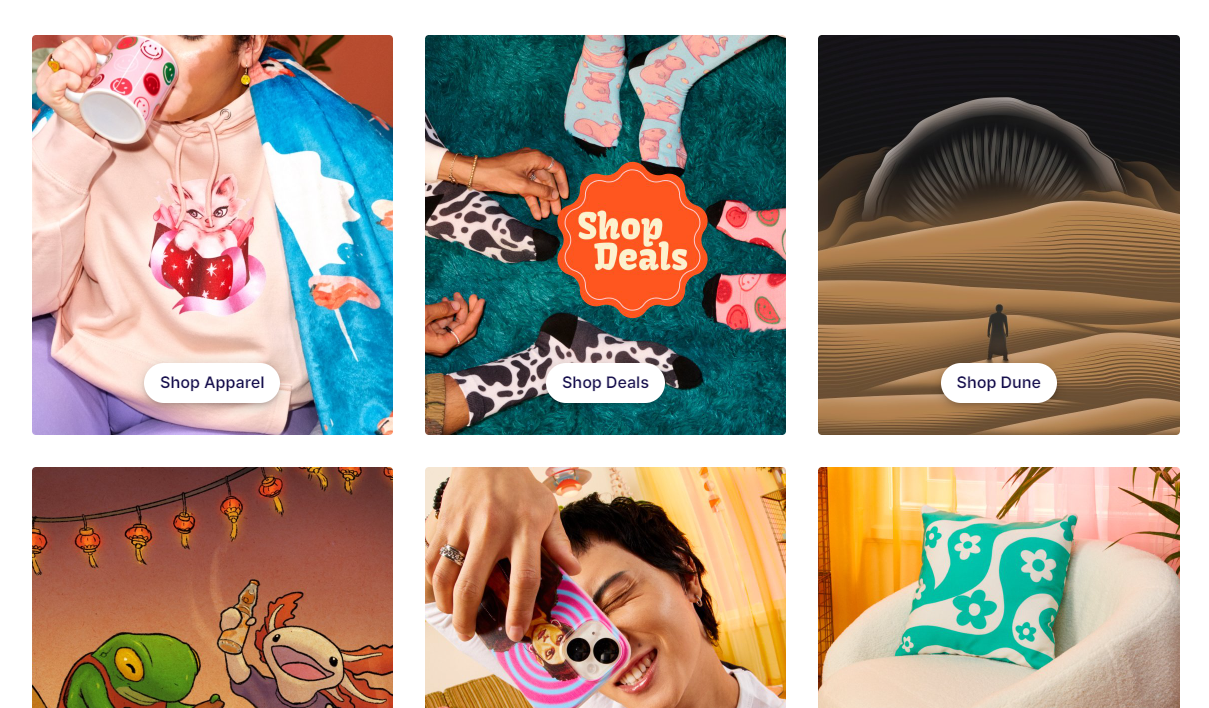
Selling branded merchandise can be a fantastic way to make money as a fitness influencer. It's not just about monetary gain (although that's always nice). It's about building your brand, and more importantly, a community.
People who like your content enough to buy and use branded merchandise are the people who are the most likely to stick around and buy more of your products and services!
Fitness influencers usually dabble in the following types of merch:
- Clothes, such as t-shirts, tank tops, leggings, shorts, and hoodies
- Accessories, such as hats, bags, water bottles, and phone cases
- Fitness equipment, such as yoga mats, resistance bands, dumbbells, and foam rollers
- Nutritional products, such as branded supplements, healthy snacks, protein powders, vitamins, and protein shakes
- Beauty products, such as moisturizers or soothing muscle baths
Aside from picking the types of products you want to sell, you'll need to think of a design. Most fitness influencers aim for something understated but distinct, meaning a design or a line of text that appeals to fans but isn't too on the nose. Designing this is something you can tackle by yourself, but you can also hire a designer.
With the designs all set, you can tackle this in two ways: either open up an online store on your own website or use a print-to-order service like Redbubble. In the case of the former, you get all the profit, but you may find it harder to get sales, and you'll need to handle both the creating and the shipping. Print-to-order services take care of all of that for you, but they take a cut out of every purchase.
6. Paid Community
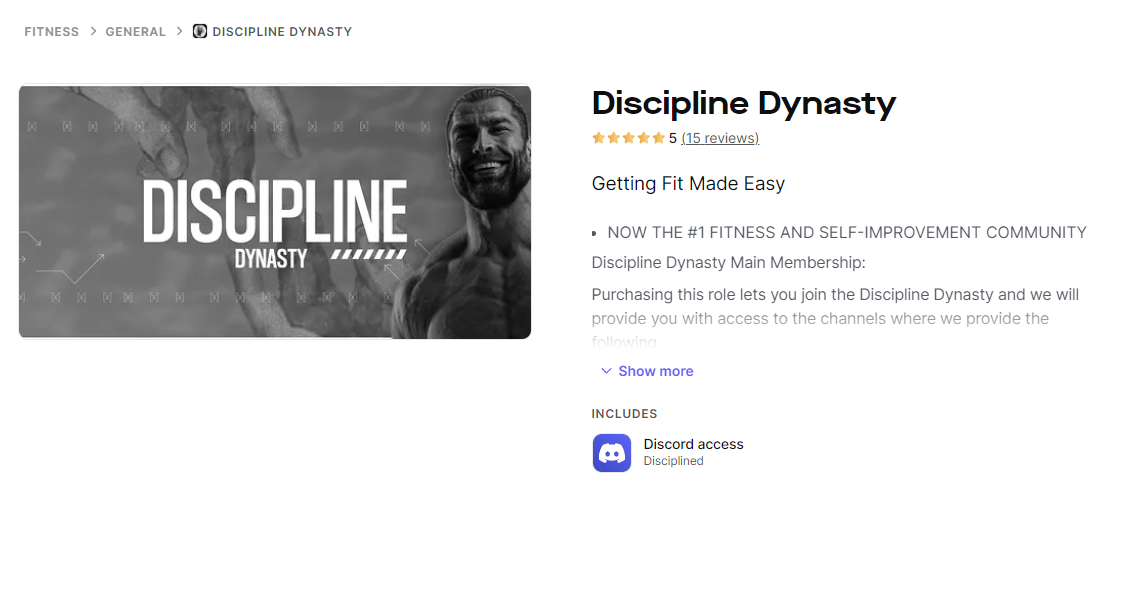
Running a paid fitness-oriented community might just be the best way to make money as an influencer in your field—and it's not just great for you. It's also great for your followers.
What does this entail? Usually, what this means is that you'd be running a Discord server centered around your personal training business and your brand as a whole. Your followers can then pay a fee—be it a subscription or a one-time expense—to join the community and interact with you and your content. However, with Whop, you no longer need to have a Discord community in order to have a community (more on this later!).
There are a lot of good things about running a fitness community. For starters, it's often a lot more effective for your followers than to passively consume your content through social media. Communities run on human interaction, allowing your followers to get to know each other and encourage each other.
It's also easier and better for you as a creator. Instead of offering a slew of different services and products across multiple platforms, you can use your community as an easy gateway to all things related to your personal brand. Buying access to your community would then equal getting access to your ebooks, tutorials, workout programs, and more.
Lastly, communities give an unparalleled way for you to interact with your followers, building their trust and your brand in one smooth move. It's different from replying to a stray comment on Instagram or YouTube. You can hold actual conversations and peek at what your members want to see, making it easier to tailor your fitness content to their needs.
Once your community is up and running, your goal is to keep the members engaged so that they stay subscribed. The good thing is that there are lots of ways to achieve that.
Need some inspiration? There you go:
- Workout of the day
You know better than anyone else that getting fit is all about being consistent. If you post a workout of the day regularly, your members will keep coming back to stay on track. Encourage your members to post their results or brag a little once they complete the workout, making them feel more like a team. - Fitness challenges
Set up different challenges for your followers to participate in. It's a good idea to diversify these to make sure that there's something in there for everyone. Participants or winners can get a reward, such as a bit of branded merch, or just a shout-out from you. - Live workouts
Many platforms allow for live streaming, which means that you can set up regular live workouts for your members to attend and follow along with. - Q&A
You can use your community to hold regular question-and-answer sessions. Some people might just want to know a little bit about you, while others want to learn more about fitness—in any case, it's an added incentive and a reason to sign up.
Making a community dedicated to your fitness brand is easier than ever. With Whop, you can set up subscription tiers or one-time fees.
7. Subscription Service

Why get paid for your work once when you could reliably get paid every month, all the while keeping your followers that much more engaged and likely to interact with your brand? Cue: subscription services, a huge hit for fitness influencers.
Setting up a subscription service means passive income as long as you prepare enough content to last your followers for a while. Fitness content is very unlikely to get outdated, so with small tweaks, all your work done today will still keep paying off a year from now.
Subscriptions are also easier to stomach for people who aren't that familiar with your brand just yet. Having to pay a flat fee may be quite intimidating—after all, you have to charge a higher amount of money to justify giving away all your secrets. With a subscription, your followers can choose how much they're willing to commit and have the option to back out if they want to. (Hint: With Whop, you can give such people a discount to convince them to stay subscribed.)
With subscriptions, your goal is to keep people coming back. That's easy to do when it comes to fitness, all because most people don't follow the same workout regime and/or nutritional plan for more than a month at a time.
Some of the best ideas to keep your followers engaged and subscribed include:
- Monthly and weekly meal plans
- Monthly and weekly fitness plans
- New fitness regimes
- Daily, weekly, and monthly fitness challenges
- Monthly and weekly group classes
- One-on-one calls
Once you've decided on what you want to offer, decide on how you want to set this up. Some fitness influencers run paid newsletters or group chats. The easiest way is often to sign up with Whop, where you can sell things like ebooks, access to private communities, video tutorials, and more, all under customizable subscription fees.
8. Online Coaching
There's a lot of good to be said about working with a trainer in person, but many people are slowly transitioning to an online training model.
Makes sense—the list of pros far outweighs the cons. For you, it's cheaper, easier, and more versatile. For your clients, it's a lot more accessible, easier to deal with if they're not feeling like going to the gym, and no less effective than in-person training.
We're, once again, circling back to running a paid community for this one. It's simply the easiest way to connect with your followers and offer them online coaching services.
If you're not digging the idea of running a whole community, you can always keep things a little more low-key. Advertise your coaching services on social media, chat with your followers to set up a call, and receive the payment in a way that suits you. This can mean setting up a website with a complete checkout system, but it's often easier to just send the person a checkout link to let them pay for the one-on-one.
9. Online Classes
Online classes are similar to the online one-on-ones we talked about above, except on steroids. Instead of helping one client at a time, you're working with a bunch of your followers and interacting with them in real-time. It's no different from running a class, be it yoga or Zumba, in person.
The upside is that you're doing it from the comfort of your own home or gym, as are your followers. Plus, your reach is potentially much bigger, not just on a geographical scale but based on the sheer number of people who can participate in each class.
Before you get started, consider some of the following:
- What kind of classes do you want to offer, such as Pilates, strength training, or even specialized classes like prenatal fitness? Consider skill levels, too—will you offer a wide range of difficulties or stick to one side of the spectrum?
- Do you want to hold live classes or just offer them as a course?
- Where will you record or stream your material from? Do you need to prepare your studio, considering things like lighting and sound quality? What about recording equipment?
- Will you run these classes on a schedule or as and when you can? If you're running a subscription model, scheduled classes work as a great incentive to get people to stay subbed.
From there, it's time to decide on the technicalities, such as figuring out a schedule, the platform you want to use, and how you want to get paid. At the risk of sounding like a broken record, running your own community is a good way to go about this, but other options include Zoom, YouTube, or Google Meet.
With Whop, you can also sell access to virtual events, such as allowing your followers to buy a ticket to the next class you host.
What’s the Best Way to Make Money as a Fitness Influencer?
Now that you've seen all these different ways to make money as a fitness influencer, your mind is probably swimming with ideas. Personal training, online classes, writing ebooks, offering online courses … There are plenty of services and products you can offer, but what is the hands down, no arguments, impossible-to-dispute best way to offer them?
The answer is simple: anything that gets you recurring revenue and that sweet, sweet passive income.
As a fitness influencer, you have plenty of ways to achieve either or both of those things, securing yourself a steady flow of cash every single month. Your mileage may vary—largely based on your established following—but one way or another, the online fitness model really lends itself to subscriptions and passive sales.
For recurring income, running a fitness community is one of the best ways to go about it. Most influencers offer access based on a subscription basis, be it weekly, monthly, quarterly, or even yearly. Then, you can use your community for just about anything you want, from running a support group to hosting one-on-one coaching calls.
Similarly, offering weekly or monthly workout and nutrition plans is a great way to make sure you'll get that money next month, too. As long as you keep your content varied and interesting, as well as help your followers achieve their desired results, they'll be much likelier to renew their subscription.
Passive income requires a slightly different approach. The idea is to create content that will stay evergreen and will keep people coming back with little to no input from you in the months to come. Ebooks, online courses, and specialized workout plans work well for this.
You'll see the best results if you diversify your content creation. Be present on social media, offer free content that's useful to get new followers and help out your existing fans, and try to engage with your community as much as time and sanity allow.
Create Your Online Fitness Empire with Whop
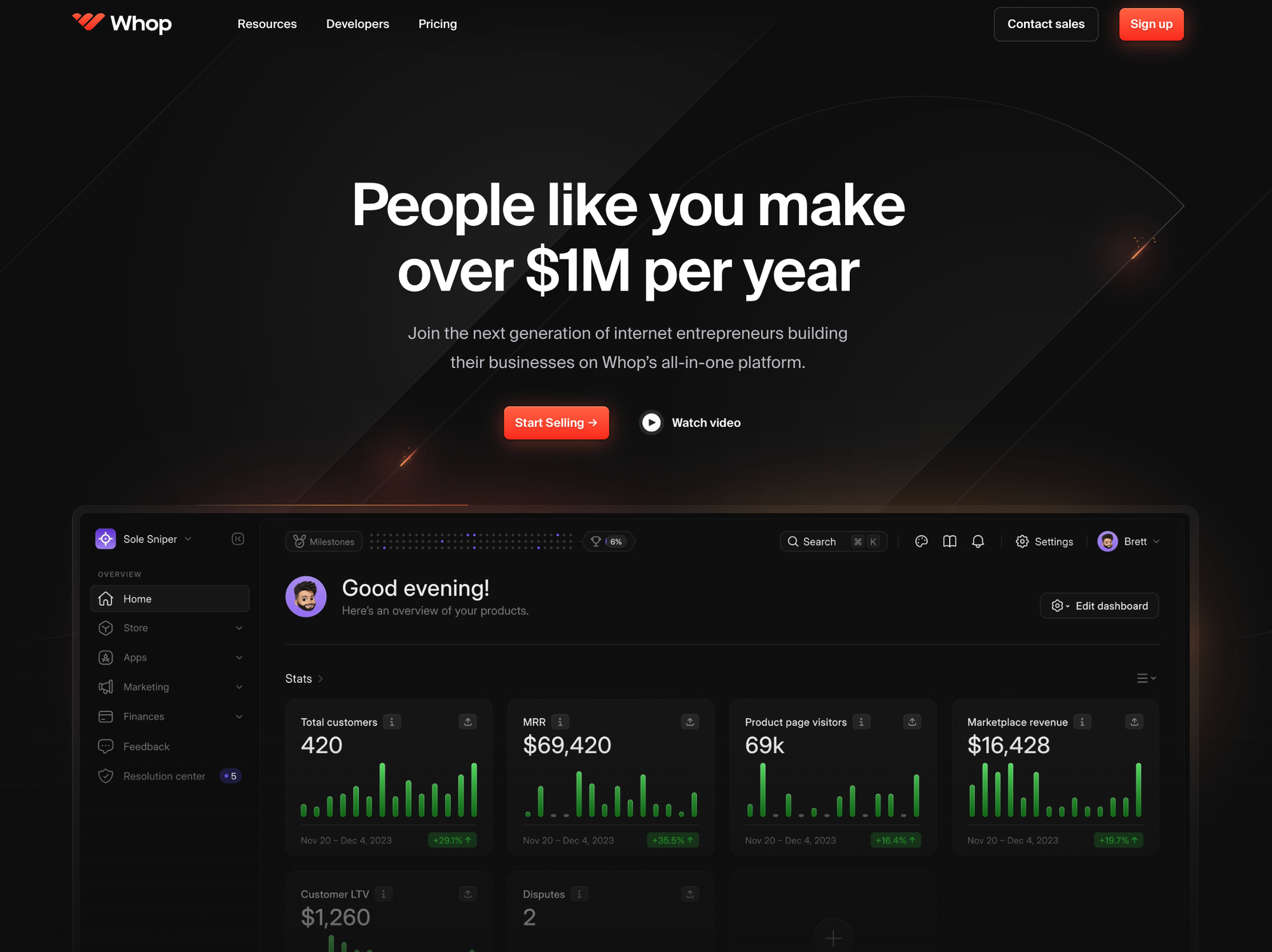
Let's face it: as a fitness influencer, you've got your plate full most of the time. Between posting on social media, recording new workouts, coming up with a content strategy for the weeks to come, and interacting with your followers, you might be spreading yourself thin.
Stop. Take your own advice and breathe—you're not alone.
There's a way to run your online fitness business with minimal hassle and at maximum profit: just sign up with Whop.
Whop is the number one solution for fitness influencers who want to offer their followers a diverse range of digital products and services.
Best of all, you don't need a website to sell your services through Whop. Instead, sign up to Whop and create your own hub. Within your Whop hub you can add all of the ready-made apps that you need to create your online fitness business. For example, if you do want to run a community, you could choose to sell access to your Discord server (if you have one) or simply create a community directly within your hub by adding the Chat and Forums app, where your members can communicate with you and each other.
Additionally, you can add the Events app for live coaching, calls, or workouts; the Files app for your downloadable products like ebooks and workout routines, the Courses app for your fitness courses, the Tips app to accept donations - and so much more!
So, rather than spreading your content over multiple apps and platforms, host it all in one place - your Whop. Then, charge access to that Whop in the form of subscriptions or one-off payments. You can even tier your pricing so that higher-paying members get access to more content.
With industry-leading fees, built-in apps that help you run your business, and automation that makes your work easier than ever, Whop is the way to go if you want to start building your fitness empire today. Make your life easier—work with a partner that helps you focus on what's important.
